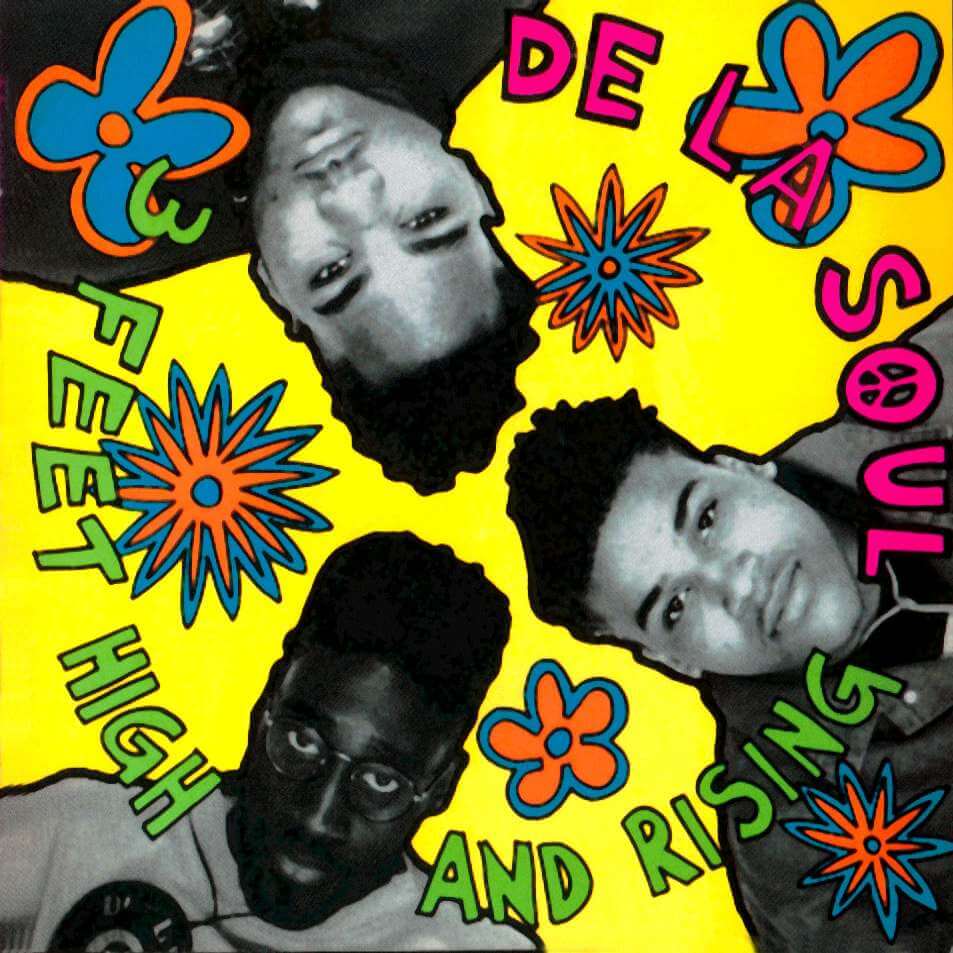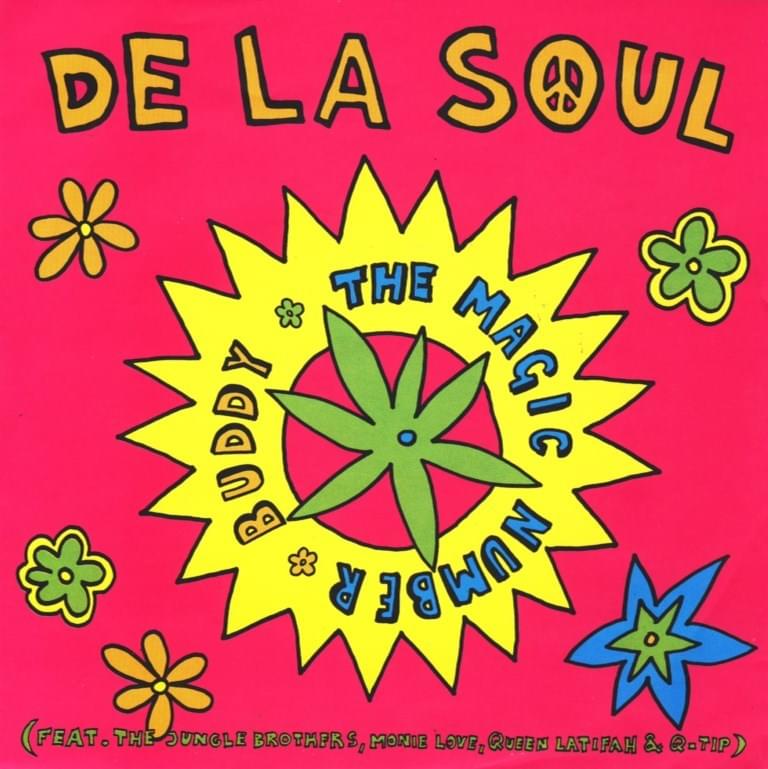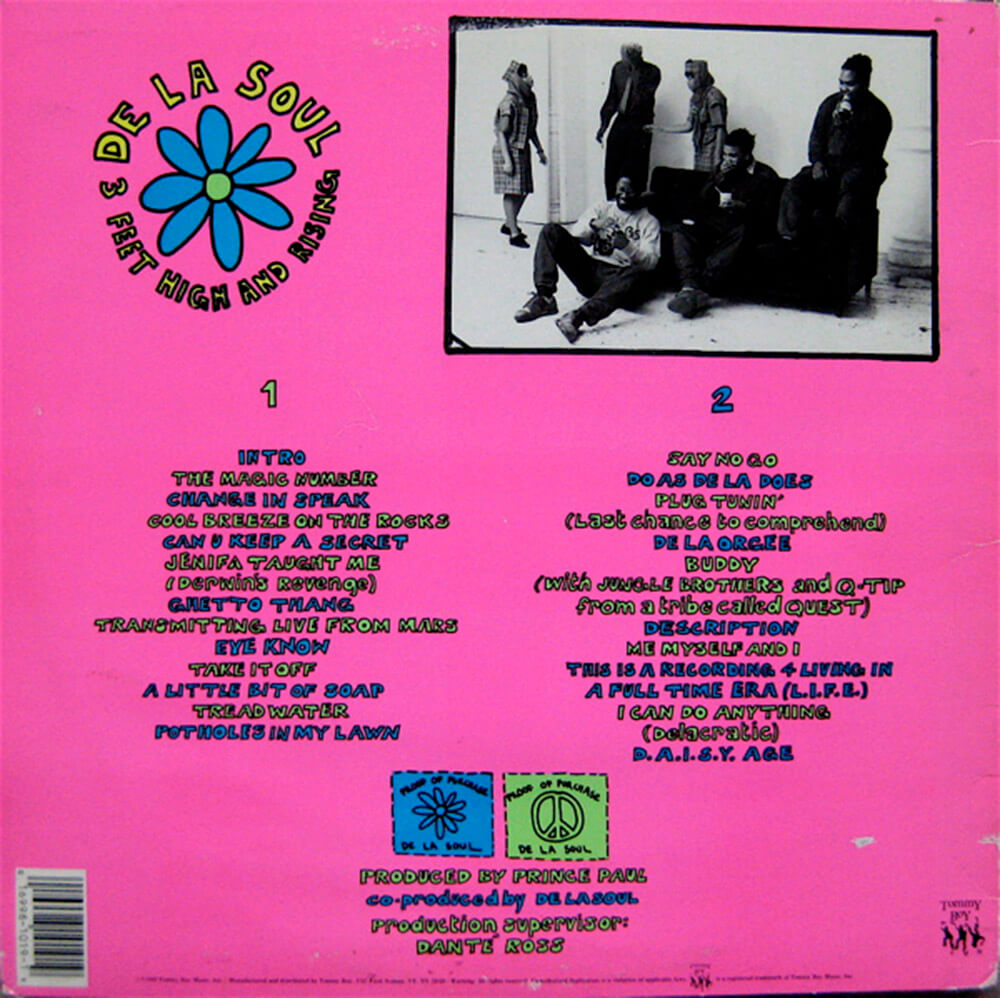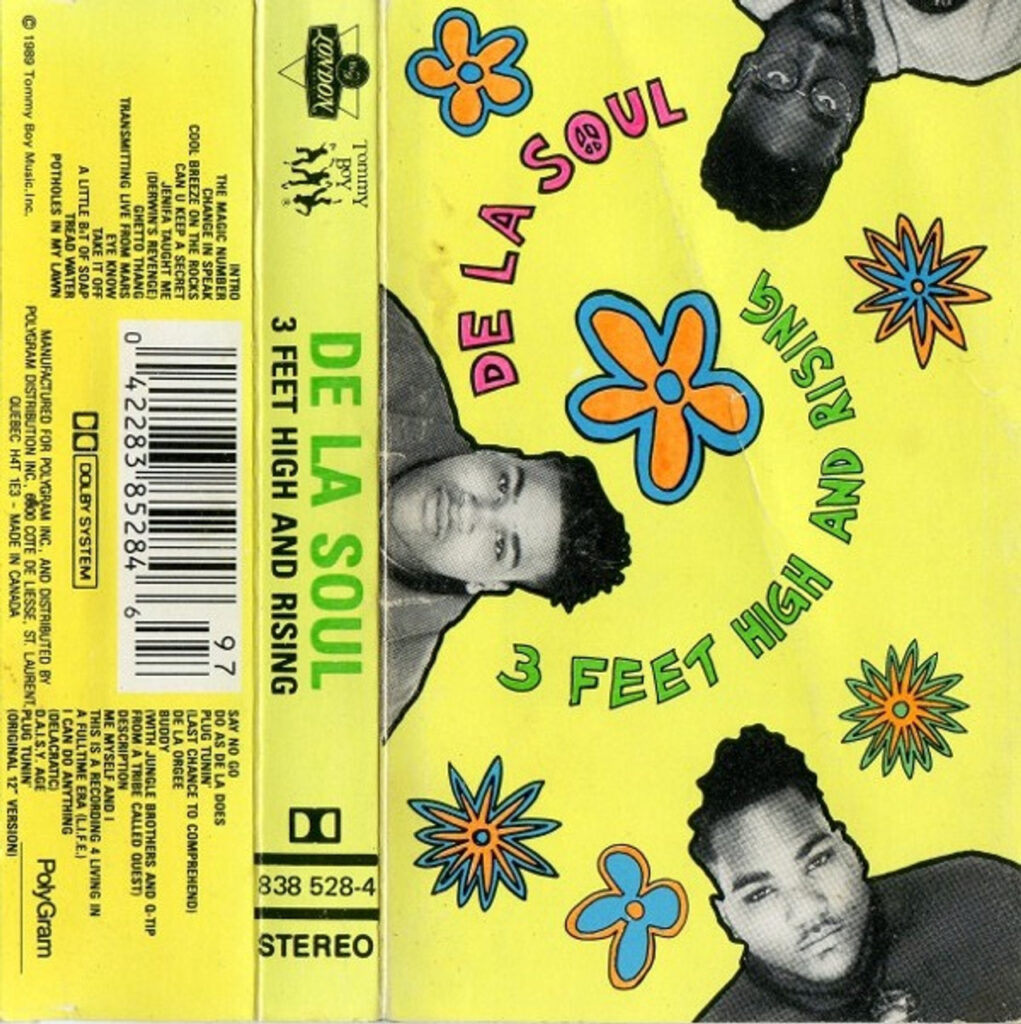De La Soul’s 3 Feet High and Rising dropped like a technicolor bomb in 1989, shattering expectations and redefining Hip Hop. The Long Island trio—Posdnuos, Trugoy the Dove, and Maseo—alongside visionary producer Prince Paul, brought an entirely new aesthetic to the genre with this release. The album’s creativity, positivity, and experimental production shifted the culture.
At a time when much of Hip Hop was dominated by hardcore beats and street narratives, 3 Feet High and Rising struck a different tone. It embraced a lighter, more playful vibe that made it stand out immediately. The album is packed with witty lyrics, offbeat humor, and clever wordplay, all delivered over a soundscape built from an incredibly diverse selection of samples. Prince Paul’s production helped create a sonic environment that was innovative and unpredictable, drawing from funk, soul, jazz, rock, and even pop culture soundbites.
The album opens with “The Magic Number,” a perfect introduction to the trio’s unique style. Built on a bouncy beat with a sample from Johnny Cash’s “Five Feet High and Rising,” the track immediately establishes De La Soul’s use of non-traditional Hip Hop elements, blending positivity, clever wordplay, and infectious energy. The trio’s chemistry is on full display as they weave their verses together, setting the tone for what the rest of the album offers.
3 Feet High and Rising blends lighthearted fun with moments of deep introspection. Tracks like “Eye Know” and “Ghetto Thang” show the range of the group’s lyrical themes. “Eye Know” is a breezy love song built around a Steely Dan sample, delivering a message of romance and positivity in a way that felt fresh for the era. “Ghetto Thang” shifts gears, offering a more serious reflection on urban life and systemic struggles. Yet, despite the weight of its themes, the track’s funky production adds an element of contrast, giving the message a unique depth.
One of the album’s singles, “Me Myself and I,” became De La Soul’s breakout hit and perhaps the song they’re most recognized for. Sampling Parliament’s “(Not Just) Knee Deep,” the track speaks about individuality and rejecting the pressures of conforming to what others expect from you. At its core, the song is a statement about self-expression, aligning with the group’s overarching message of embracing who you are, regardless of outside expectations.
“Buddy,” another highlight, serves as a posse cut that includes contributions from their Native Tongues affiliates, including A Tribe Called Quest’s Q-Tip and the Jungle Brothers. This track oozes with the laid-back, communal vibe that defines the collective. “Buddy” takes on a playful, flirtatious tone, with each artist dropping smooth, lighthearted verses over a funk-infused beat. The track’s relaxed flow and group chemistry made it an instant classic, embodying the easygoing, yet creative ethos of the Native Tongues movement.
“Tread Water” stands out for its surreal, allegorical storytelling. In this track, Pos and Trugoy spin a fable filled with talking animals, using these characters to offer advice on perseverance and survival. The song’s whimsical approach, combined with a laid-back, jazz-tinged beat, makes it a refreshing break from traditional lyrical narratives in Hip Hop. It’s a prime example of De La Soul’s willingness to explore creative concepts that were left-field, yet highly relatable.
“Potholes in My Lawn” is another track that exemplifies the group’s quirky, unconventional style. This song, with its catchy chorus and oddball samples, aims at biting MCs and the frustrations of having your style copied by others. The whistle sample that runs throughout the track gives it a distinctive sound, making it one of the most memorable cuts on the album. Lyrically, the trio uses clever metaphors to express their annoyance, while still keeping things light and playful.
Prince Paul’s production on 3 Feet High and Rising was groundbreaking. His use of eclectic samples, some of which were unconventional choices for Hip Hop, added a collage-like quality to the album. Tracks like “Cool Breeze on the Rocks” and “Transmitting Live from Mars” take the listener on a sonic adventure, incorporating samples from sources as varied as French language instruction records and The Turtles’ “You Showed Me.” This type of production wasn’t the norm in Hip Hop, and it opened up new avenues for what producers could do with samples, influencing the genre for years to come.
The album also introduced the concept of skits and interludes, which have since become a staple in Hip Hop albums. On 3 Feet High and Rising, the skits tie into the album’s overall theme, with the “game show” concept popping up throughout the project. These moments of humor, such as the skits where the group answers absurd trivia questions, break up the songs and give the album an added layer of personality. Unlike many skits that followed in the genre, these moments feel essential to the overall listening experience rather than being filler.
Beyond its sound, the visual aesthetic and fashion sense of De La Soul added another layer of originality to the album’s impact. The brightly colored, psychedelic album cover with its daisy motif stood in stark contrast to the gold chains and tough personas common in Hip Hop at the time. This “D.A.I.S.Y. Age” philosophy, which stands for “Da Inner Sound, Y’all,” wasn’t just a superficial style choice. It reflected a broader vision of positivity, individuality, and Afrocentrism central to the group’s message.
Even with its positive vibes, 3 Feet High and Rising doesn’t shy away from more controversial material. “De La Orgee” and “Take It Off” both show that the group could get provocative when they wanted to. This balance between playfulness and edginess kept the album from being pigeonholed into a single lane, offering a more complex look at the personalities of De La Soul.
The album was not without its challenges, however. Its heavy reliance on sampling eventually led to legal issues that would haunt the group for decades, particularly as laws around sample clearance became stricter. This legal limbo kept 3 Feet High and Rising from being available on streaming platforms until 2023, frustrating fans and limiting the group’s reach to new listeners. Nevertheless, the album’s influence has continued to grow over the years.
3 Feet High and Rising played a pivotal role in shaping the East Coast’s alternative Hip Hop scene. Alongside A Tribe Called Quest and the Jungle Brothers, De La Soul’s debut was instrumental in the formation of the Native Tongues collective. The group championed artistic creativity, Afrocentrism, and a rejection of the rigid formulas that had begun to dominate mainstream Hip Hop. This drive for innovation opened the door for more experimental, left-of-center sounds and approaches, leaving an enduring legacy that continues to influence the genre’s evolution today.
With the passing of Trugoy the Dove in 2023, 3 Feet High and Rising takes on an even deeper significance. It serves not only as a monumental album in Hip Hop’s history but also as a lasting tribute to Trugoy’s creative spirit. The playful, eclectic production, combined with thought-provoking lyrics, changed the sound of Hip Hop in 1989 and continues to inspire generations of artists. Over 35 years later, De La Soul’s debut still exemplifies how creativity, humor, and intelligence can produce a work that transcends trends. Today, it is a timeless classic, keeping the spirit of De La Soul alive.



